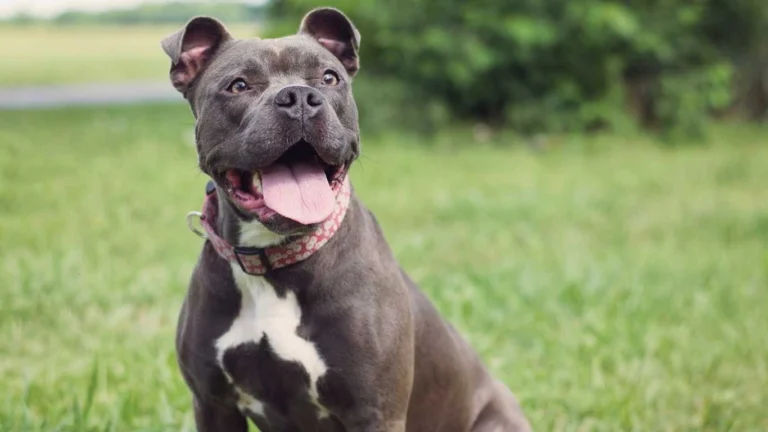How to Stop Your Dog from Vomiting Yellow Bile Naturally
It’s early in the morning and your dog suddenly starts retching—again. You rush over and find that all they’ve brought up is yellow foam. Sound familiar? Many pet parents know the stress of seeing their furry friend vomit yellow bile. It’s unsettling, especially when it seems to happen for no clear reason.
While an occasional episode might not be a cause for alarm, frequent bile vomiting can be a sign that your dog’s digestive system is out of sync. The good news? There are practical, safe ways to help manage this issue—often starting right at home.
What Is Yellow Bile, and Why Do Dogs Vomit It?
Yellow bile is a digestive fluid produced in the liver and stored in the gallbladder. It helps break down fats in the small intestine. When your dog’s stomach is empty for too long, this bile can irritate the stomach lining and lead to vomiting. This condition is often referred to as bilious vomiting syndrome.
Dr. Rachel Barrack, a licensed veterinarian and certified veterinary acupuncturist, explains: “Vomiting bile often indicates that a dog’s stomach is too empty for too long. Feeding smaller, more frequent meals can usually help.”
Foods and Lifestyle Changes That Can Help
Here are some vet-recommended and expert-approved strategies to stop your dog from vomiting yellow bile:
-
Feed Smaller, More Frequent Meals
When a dog’s stomach is empty for extended periods, bile can accumulate and cause irritation. Splitting meals into two or three portions throughout the day helps keep their digestive system stable.
Tip: A light bedtime snack like a few pieces of boiled chicken or plain kibble can help prevent early morning bile vomiting. -
Switch to Easily Digestible Food
Foods that are gentle on the stomach—like boiled chicken, plain rice, or specialized sensitive-stomach dog foods—can reduce inflammation and digestive upset.
Why it works: Bland diets reduce the risk of stomach irritation and help regulate bile production. -
Try a Low-Fat Diet
Fatty foods can slow digestion and increase bile production. Dogs prone to gastrointestinal issues benefit from lower-fat meals.
Check the label: Look for dog foods labeled “low fat” or ask your vet about prescription diets for GI health. -
Add a Bit of Fiber
Adding canned pumpkin or a spoonful of psyllium husk can help keep digestion regular and reduce bile-related vomiting.
Portion guide: A teaspoon for small dogs or a tablespoon for larger breeds is usually enough—too much fiber can have the opposite effect. -
Stick to a Consistent Feeding Schedule
Dogs thrive on routine. Random feeding times can disrupt their digestive rhythm, leading to bile build-up.
Routine tip: Feed at the same times every day and avoid skipping meals, especially breakfast. -
Use Elevated Food Bowls (for some dogs)
For dogs with acid reflux or megaesophagus, raised bowls can help food move more easily down the esophagus.
Note: Not all dogs benefit from elevated bowls—ask your vet before switching. -
Incorporate Probiotics
A healthy gut microbiome can support smoother digestion and reduce inflammation. Probiotic supplements formulated for dogs help restore balance.
Expert source: According to the American Kennel Club, probiotics can “help with digestion and reduce gastrointestinal symptoms like diarrhea and vomiting.” -
Eliminate Table Scraps and Sudden Treats
Even small bits of human food can trigger digestive distress in sensitive dogs. Stick to consistent treats that don’t irritate their system.
Tip: Look for single-ingredient, low-fat treats or use bits of your dog’s regular kibble during training.
Expert Insights to Keep in Mind
Veterinary nutritionist Dr. Lisa Freeman of Tufts University advises: “Pet parents often overlook subtle signs of GI discomfort. Chronic bile vomiting warrants a nutritional review and sometimes a work-up to rule out underlying issues like IBD or pancreatitis.”
In addition to nutrition, your dog’s environment, stress levels, and activity can play a role in digestive health. Be patient and observe patterns to help your vet determine the cause.
Extra Tips (With Gentle Caution)
If you’re already following the basics and your dog is still struggling, here are a few lesser-known remedies worth exploring—always with your vet’s approval:
- Slippery Elm Bark Powder – A natural remedy that coats and soothes the stomach lining. Often used in holistic pet care. Start with a tiny dose mixed into food.
- CBD Oil (Dog-specific) – Some anecdotal evidence suggests it can reduce nausea and support appetite. Choose a brand that’s vet-recommended and THC-free.
- Feeding from a Puzzle Toy – Slowing down meals can prevent gulping and excess stomach acid production.
Disclaimer: While natural remedies can help, they should never replace medical treatment for serious or chronic symptoms.
When to See the Vet
It’s important to know the difference between a one-off episode and something more serious. Contact your vet if your dog:
- Vomits yellow bile more than twice a week
- Shows signs of pain, lethargy, or loss of appetite
- Has blood in their vomit or stool
- Is a puppy, senior, or has existing health issues
These could be signs of underlying problems like liver disease, pancreatitis, or intestinal blockages.
Final Thoughts
Dealing with your dog vomiting yellow bile can be frustrating—but it’s often manageable with simple, consistent care. By adjusting your dog’s diet, feeding schedule, and daily routine, you may see big improvements in just a few days.
But remember: every dog is different. What works for one might not work for another. The best results come from a combination of attentive care at home and personalized guidance from a trusted veterinarian.
Your dog depends on you to notice these subtle signs and advocate for their comfort. With a little patience and the right info, you can help keep their tummy—and your peace of mind—happier and healthier.





